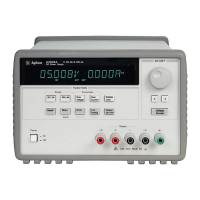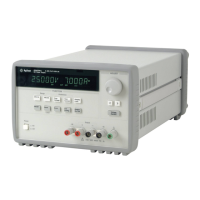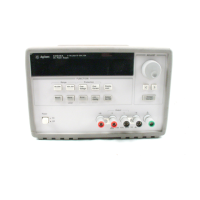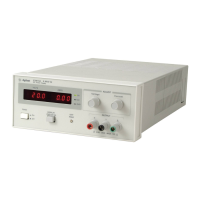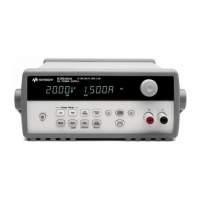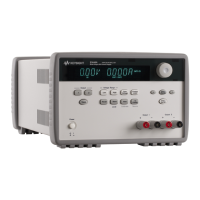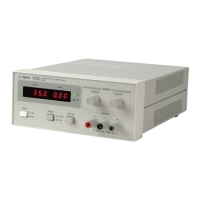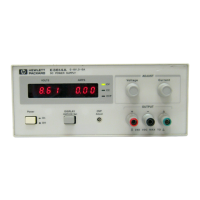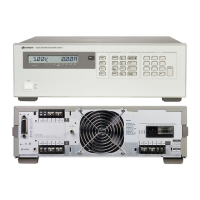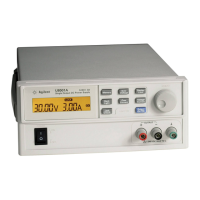Chapter 4 Remote Interface Reference
The SCPI Status Registers
93
4
The Questionable Status Register
The Questionable Status register provides information about unexpected operation of
the power supply. Bit 4 reports a fault with the fan, and bit 13 summarizes questionable
outputs for any of the three supplies. For example if one of the three supplies is in
constant voltage mode and due to an overload loses regulation, bit 13 is set (latched).
Send the command STAT:QUES? to read the register. To make use of bit 13 you must
first enable registers you wish to summarize with bit 13. Send
STAT:QUES:INST:ENAB 14 to enable the Questionable Instrument register. Then
send STAT:QUES:INST:ISUM<n>:ENAB 3 for each supply to enable the
Questionable Instrument Summary register, where n is 1, 2, or 3.
Table 4-2. Bit Definitions - Questionable Status Register
The Questionable Instrument Status Register
The Questionable Instrument register provides information about unexpected
operations for each of the three supplies. For example if the +6V supply is in the
constant voltage mode and loses regulation, then bit 1 set indicating a possible
overload in the +6V supply. The +25V supply is reported as bit 2, and the -25V supply
as bit 3. Send the command STAT QUES:INST? to read the register. The
STAT:QUES:INST:ISUM<n> registers must be enabled to make use of the
Questionable Instrument register. Send STAT:QUES:INST:ISUM<n>:ENAB 3
to enable output n.
The Questionable Instrument Summary Register
There are three Questionable Instrument Summary registers, one for each supply
output. These registers provide information about voltage and current regulation. Bit
0 is set when the voltage becomes unregulated, and bit 1 is set if the current becomes
unregulated. For example if a supply which is operating as a voltage source (constant
voltage mode) momentarily goes to constant current mode, bit 0 is set to indicate that
the voltage output is not regulated. To read the register for each supply, send
STAT:QUES:INST:ISUM<n>?, where n is 1, 2, or 3.
Bit
Decimal
Value
Definition
0-3 Not used 0 Always set to 0.
4 FAN 16 The fan has a fault condition.
5-12 Not Used 0 Always set to 0.
13 ISUM 8192 Summary of QUES:INST and QUES:INST:ISUM registers.
14-15 Not Used 0 Always set to 0.
